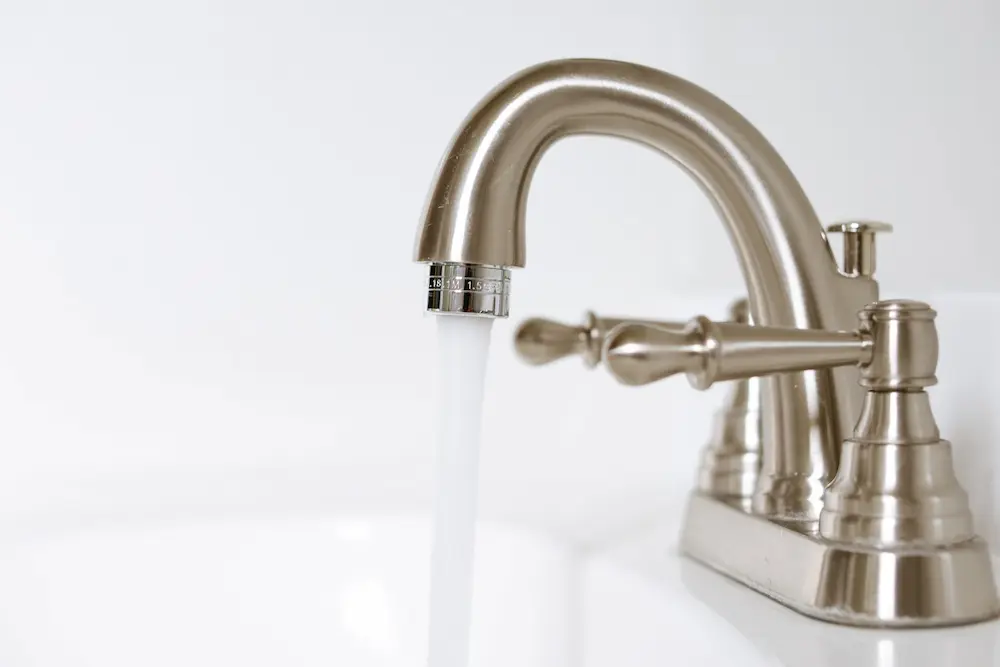Faucet Won’t Turn Off? Here’s What You Can Do
If you’re experiencing a faucet that won’t turn off, you’re not alone. This is a common problem that can be caused by a variety of issues. The good news is that many of these issues can be easily fixed, even if you’re not a plumbing expert.
One of the most common reasons for a faucet that won’t turn off is a worn-out washer. Over time, the washer that creates a seal between the faucet and the valve can become damaged or worn, causing water to continue to flow even when the faucet is turned off. Another common issue is a loose or damaged handle. If the handle is not able to fully close the faucet, water will continue to flow.
Fortunately, fixing a faucet that won’t turn off is often a simple process that can be done with a few basic tools and some know-how. In this article, I’ll walk you through some of the most common causes of a faucet that won’t turn off and provide step-by-step instructions for fixing the problem. By the end of this article, you’ll have the knowledge and confidence to tackle this common plumbing issue on your own.
Identifying the Problem
As a homeowner, it can be frustrating to deal with a faucet that won’t turn off. Fortunately, identifying the problem can help you fix it quickly and easily. In this section, I’ll cover two sub-sections to help you recognize the signs of a stuck faucet and determine the faucet type.
Recognizing Signs of a Stuck Faucet
A stuck faucet is a common reason why your faucet won’t turn off. There are a few signs to look out for that can help you recognize a stuck faucet:
- The faucet handle is difficult to turn.
- The faucet handle is loose or wobbly.
- The faucet drips even when the handle is turned off.
If you notice any of these signs, it’s likely that your faucet is stuck. The good news is that fixing a stuck faucet is usually a simple process that you can do yourself.
Determining the Faucet Type
Before you can fix your faucet, you need to determine the faucet type. There are four common types of faucets:
- Ball
- Cartridge
- Ceramic disc
- Compression
To determine the faucet type, you’ll need to take a look at the faucet handle. Here’s how to identify each type:
- Ball: The handle has a single lever that moves in a circular motion.
- Cartridge: The handle has a single lever that moves up and down.
- Ceramic disc: The handle has a single lever that moves side to side.
- Compression: The handle has two separate knobs for hot and cold water.
Once you’ve determined the faucet type, you can move on to fixing the problem.
Preparation Steps
Before attempting to fix a faucet that won’t turn off, it is important to gather the necessary tools and turn off the water supply to avoid any accidents or further damage. Here are the preparation steps you need to take:
Gathering Necessary Tools
To fix a faucet that won’t turn off, you will need a few tools that are commonly found in most households. Here are the tools you will need:
| Tools | Description |
|---|---|
| Adjustable wrench | Used to loosen or tighten nuts and bolts |
| Flathead screwdriver | Used to remove the faucet handle |
| Allen wrench | Used to remove the faucet handle if it has a hexagonal hole |
| Replacement parts | Depending on the issue, you may need to replace certain parts such as the O-ring, washer, or cartridge |
Make sure you have all the necessary tools before starting the repair process. If you don’t have any of the tools listed above, you can purchase them at a hardware store or borrow them from a friend or neighbor.
Turning off the Water Supply
Before attempting to fix a faucet that won’t turn off, it is important to turn off the water supply to avoid any accidents or further damage. Here’s how to turn off the water supply:
- Locate the shutoff valve under the sink or near your home’s water heater.
- Turn the valve clockwise to shut off the water supply.
- Turn on the faucet to release any remaining water in the pipes.
Once the water supply is turned off, you can proceed with the repair process without any risk of water damage or accidents.
Fixing Techniques
If your faucet won’t turn off, it can be frustrating and wasteful. Fortunately, there are several techniques you can use to fix the problem. Here are some of the most effective methods:
Loosening the Faucet Handle
One common reason why a faucet won’t turn off is that the handle has become too tight. To fix this issue, you can try loosening the handle by following these steps:
- Turn off the water supply to the faucet.
- Remove the handle by using a screwdriver to loosen the set screw.
- Use pliers to loosen the packing nut.
- Remove the stem and inspect it for damage.
- Replace any damaged parts and reassemble the faucet.
Replacing the Cartridge
Another reason why a faucet won’t turn off is that the cartridge has become worn or damaged. To replace the cartridge, follow these steps:
- Turn off the water supply to the faucet.
- Remove the handle and the retaining clip.
- Use pliers to remove the cartridge.
- Install a new cartridge and reassemble the faucet.
Addressing Corrosion Issues
Corrosion can also cause a faucet to become stuck in the on position. To address corrosion issues, try the following:
- Turn off the water supply to the faucet.
- Remove the handle and the retaining clip.
- Use a wire brush or sandpaper to remove any corrosion from the faucet parts.
- Reassemble the faucet.
By following these techniques, you can fix a faucet that won’t turn off and save water and money in the process.
Preventing Future Issues
As someone who has dealt with a faucet that won’t turn off, I know how frustrating it can be. Fortunately, there are steps you can take to prevent this issue from happening again in the future.
Regular Maintenance Tips
One of the best things you can do to prevent a faucet from getting stuck in the “on” position is to perform regular maintenance. This includes cleaning the faucet regularly and checking for any signs of wear and tear.
To clean your faucet, simply wipe it down with a damp cloth and mild soap. Be sure to avoid using any abrasive cleaners, as these can scratch the surface of your faucet and cause damage.
In addition to cleaning your faucet, you should also check for any signs of wear and tear. This includes looking for leaks, loose handles, and other issues that could cause your faucet to malfunction.
Choosing Quality Faucet Parts
Another important factor in preventing future faucet issues is choosing high-quality faucet parts. When you’re shopping for replacement parts, be sure to look for products that are made from durable materials and designed to last.
Some of the most important parts to consider when choosing a faucet include the valve, handle, and spout. These components work together to control the flow of water and ensure that your faucet functions properly.
By taking the time to perform regular maintenance and choose quality parts, you can help prevent future issues with your faucet and ensure that it continues to function properly for years to come.
Conclusion
In conclusion, a faucet that won’t turn off can be a frustrating problem to deal with. However, with the right tools and some basic knowledge, it is a problem that can be easily fixed. Here are some key takeaways to keep in mind:
- The first step in fixing a faucet that won’t turn off is to turn off the water supply to the faucet. This can usually be done by twisting the valve underneath the sink.
- Once the water supply is turned off, you can begin to diagnose the problem. Common causes of a faucet that won’t turn off include a worn-out handle or valve, a blockage in the aerator or cartridge, or high water pressure.
- Depending on the cause of the problem, you may need to replace certain parts of the faucet. This can usually be done with a few basic tools and some replacement parts from a hardware store.
- If you are not comfortable fixing the faucet yourself, or if the problem seems more serious than you can handle, it is always a good idea to call a professional plumber. They will be able to diagnose the problem and fix it quickly and efficiently.
Remember, a faucet that won’t turn off can lead to high water bills and even water damage if left unchecked. So, if you notice that your faucet is not turning off properly, it is important to address the problem as soon as possible. With a little bit of effort, you can have your faucet working like new again in no time!





